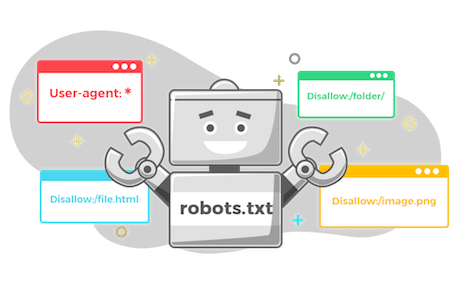Starting July 15, 2025, YouTube is making a seismic shift.
In an update causing tremors across content marketing circles, YouTube announced it will demonetize “inauthentic” content. Think AI-narrated slideshows, reused compilations with zero commentary, and content that screams automation over intention.
But here’s the thing: this isn’t just a monetization change. It’s an algorithmic quality update disguised as a policy tweak. And in a Search Everywhere world, that’s a big deal.
TL;DR
- YouTube is now central to AI-driven search, making video quality critical for visibility across Google, ChatGPT, and Bing.
- The new policy targets low-effort, inauthentic content, including AI-narrated slideshows and recycled compilations.
- Google favors YouTube content in AI Overviews because it’s a safe, owned asset amid growing content-blocking trends from publishers.
- This update mirrors Google Panda, marking a platform-wide shift toward helpful, high-quality video content.
- Creators must demonstrate human insight, original commentary, and alignment with audience intent to stay monetized—and discoverable.
- Brands should audit and integrate video as part of a broader SEO strategy, treating each video as a search asset, not a social post.
YouTube Is Search Infrastructure, Not Just Social Media
Let’s rip off the Band-Aid:
YouTube is a search engine. The second largest in the world, to be precise.
People don’t just scroll YouTube.
They search for how-tos, tutorials, product reviews, news, and everything in between. This means that YouTube is not just a social media platform but a crucial part of the broader search ecosystem. Understanding this is essential for creators aiming to monetize their channel content effectively.
This shift means that creators must produce original, authentic content that aligns with YouTube’s monetization policy and advertiser-friendly guidelines.
The platform’s community guidelines and advertiser-friendly guidelines work together to protect viewers from inappropriate or low-quality content while ensuring advertisers feel confident placing ads on videos.
YouTube’s automated detection systems use many factors to identify inauthentic content, including mass-produced, repetitive content and low-quality content that adds little value.
Channels relying solely on reaction videos, reused compilations, or AI-generated narration without meaningful human insight risk violating these monetization policies.
Creators wanting to monetize must subscribe to these standards and focus on adding value through commentary, analysis, or unique perspectives.
This approach protects the platform’s overall quality and helps creators maintain access to monetization features such as ads, channel memberships, and revenue from advertisers.
In this context, YouTube’s role as a platform extends beyond video hosting; it acts as a voice and a community where brands, creators, and viewers interact. ‘
Upholding these standards ensures that the platform remains a trusted space for advertising and content discovery, benefiting everyone involved.
By embracing these guidelines, creators can avoid mistakes that might lead to demonetization or removal from the YouTube Partner Program.
Instead, they can build a sustainable channel that thrives on authentic engagement and meets the expectations of both viewers and advertisers within the broad range of content on YouTube.

Why Visibility on YouTube Has Broader Implications
Most marketers still treat YouTube as a siloed platform, separate from Google, ChatGPT, or the company blog. But that thinking is outdated.
YouTube results dominate traditional search, and YouTube SEO directly impacts the broader Search Everywhere ecosystem.
They also feed the new generation of AI-powered interfaces. If your brand’s channel content doesn’t meet YouTube’s monetization policy and adhere to advertiser-friendly guidelines, it won’t show up in those answers either, limiting your visibility and revenue potential.
How YouTube Fits into the Search Everywhere Ecosystem
Google’s AI Overviews pull YouTube videos directly into generative answers because video provides the one thing AI-generated text often lacks: tangible context.
A well-structured video can demonstrate a process, convey expertise through tone and delivery, and establish authority in seconds. But it’s not just about user experience. There’s a deeper strategic reason YouTube videos are favored.
Here’s why:
Google owns YouTube. That means it’s one of the few primary content sources that Google can feature freely, without relying on other sites. As more website owners start blocking Googlebot, frustrated by AI Overviews scraping content without driving traffic, Google needs a fallback.
Google needs reliable, high-quality content that it can serve users safely. YouTube gives them that.
But if YouTube is going to be elevated in search, its content must align with Google’s broader Helpful Content Guidelines. Low-effort videos simply won’t do. That’s the real driver behind the monetization policy update.
It’s not just about protecting ad dollars. It’s about ensuring that the content Google features—especially on its own platforms—reflects a standard of usefulness and trust.
In this ecosystem, your YouTube videos aren’t isolated assets. They are increasingly critical visibility levers directly influencing how your brand appears across AI engines, knowledge graphs, and zero-click environments.
You’re not just optimizing for YouTube, you’re reinforcing your discoverability across the entire AI-powered web.
Why AI Narration Isn’t the Enemy, But Laziness Is
It’s easy to blame artificial intelligence, but AI is not the villain here.
YouTube’s crackdown doesn’t demonize the tool; it targets the user’s approach. When creators rely solely on auto-generated narration, stitched-together stock clips, and zero editorial input, they’re missing the point entirely.
Human Insight is the Missing Layer
AI can handle the heavy lifting. But without commentary, synthesis, or contextualization, the final product lacks soul. YouTube’s policy enforces this simple truth: humans must add meaning. A slideshow alone can’t satisfy search intent.
A robotic voice reading Wikipedia doesn’t build authority. And without a unique voice, your video becomes just another piece of digital noise.
What YouTube Considers Valuable Human Input
You don’t need to be Spielberg. But your video needs a reason to exist beyond filling a quota.
That could be an expert’s opinion, a unique case study, a story, or just commentary that shows you understand your audience. When content delivers a fresh angle or personalized touch, it earns both trust and traction.
Welcome to YouTube’s Panda Moment
Remember Google Panda?
Back in 2011, it wiped out low-quality content farms in an effort to surface more relevant results.
This YouTube update follows the same playbook. Only this time, it’s tackling poor-quality video content in a cross-platform ecosystem.

The Intent Behind the Cleanup
YouTube’s updated monetization policies are not merely about protecting ad revenue; they are about preserving search integrity and improving the overall user experience.
By removing monetization incentives from low-quality creators, YouTube discourages spam and incentivizes creators to deliver real value through original and authentic content. This approach aligns with YouTube’s role as a major player in the broader community of digital content creators and advertisers.
Creators who want to remain eligible for monetization must understand that simply reusing existing content or posting reaction videos without significant added commentary or analysis will no longer suffice.
Instead, channels must intend to educate, entertain, or inform, contributing positively to the community and adhering to friendly guidelines that foster a safe and engaging environment.
This minor update to the monetization policy also emphasizes the importance of watch time and channel memberships as signals of genuine audience engagement.
Many factors are considered when determining eligibility for monetization, including adherence to advertiser-friendly guidelines, community guidelines, and the originality of the content. Channels that violate these policies risk removal from the YouTube Partner Program.
In this way, YouTube maintains a delicate balance between supporting creators and protecting brands advertising on the platform.
By encouraging creators to focus on quality over quantity, YouTube aims to improve content discoverability across sites and devices, ensuring that viewers find trustworthy, valuable videos.
Ultimately, this update is a call to action for creators to rethink their content strategies and embrace new ways to add human insight, creativity, and authenticity.
Those who adapt will benefit from increased access to monetization features and a stronger connection with their audience, while those relying on repetitive or mass-produced content face demonetization and potential account suspension.
Video Optimization Is Now Mission-Critical
Too often, brands treat video as a visual bonus, a nice-to-have instead of a necessity. But video must be part of your core content strategy in today’s search environment. Not just for YouTube visibility, but for SERP inclusion, generative AI sourcing, and user trust.
Rethinking Video from a Search Perspective
Optimization doesn’t start with tags or titles. It starts with intent.
Why does this video exist? Who is it for? What question does it answer?
When you plan content from the angle of real user need, optimization becomes embedded, not added later as an afterthought.
Structuring Videos for Discoverability
Effective videos mirror effective blog posts: they open with a clear takeaway, build context quickly, and deliver actionable value.
Keep your branding tight, your intros short, and your storytelling focused. Add chapters, transcripts, and relevant links to make it easy for users—and search engines—to understand the structure.
Search Everywhere Optimization Starts with Content Integrity
Search Everywhere Optimization is more than technical SEO. It’s about making content discoverable, trustworthy, and valuable, on any platform, anytime.
And that begins with editorial intent.
Why Multi-Platform Visibility Depends on Quality
Generative search doesn’t care where your content lives. If it’s valuable, it gets surfaced. If it’s filler, it gets skipped. Whether the query is asked on YouTube, Google, TikTok, or ChatGPT, the same principle applies: only original, helpful content wins visibility.
How Brands Can Anchor Their Presence Everywhere
This isn’t about doing more, it’s about doing better.
One high-quality, insight-driven video can outperform a dozen recycled explainers. When your voice is strong, your narrative is unique, and your visuals are purpose-built, your content becomes platform-agnostic fuel for search engines.
Time to Audit Your Video Strategy
The brands that will thrive in this new landscape are the ones willing to get honest about their current content. A video audit isn’t just about views but value alignment.

Questions to Ask During a Content Audit
Start by reviewing your top-performing videos.
Are they still relevant? Are they unique? Do they solve problems or just echo popular talking points? Then, examine your lower performers. Are they salvageable with context or commentary? Or do they need to be removed altogether?
Look at your production process, too.
Is it built around templates or insight? Are you building to fill space, or to serve a purpose? You’ll find your answer in the intent behind your scripts.
When to Revise and When to Retire
Not every video needs to be remade. Some simply need better thumbnails, updated metadata, or a refreshed intro.
But if a video has no hook, no human element, and no value beyond keywords, it’s time to let it go. Invest your energy where it counts.
Build Videos That Support Cross-Channel Search
Every video you publish should be viewed as a search asset. That means its impact doesn’t end on YouTube. When planned properly, video content can fuel SEO campaigns, blog content, newsletters, social posts, and AI training sets.
Embedding Video into a Broader Content Strategy
Think in clusters, not silos.
If your blog covers a topic, embed your YouTube video there. If your product page includes an explainer, add video testimonials. Repurpose key takeaways into reels or shorts. Content should cross-pollinate, not duplicate.
This is how brands create consistency, both in messaging and in algorithmic relevance. Every touchpoint reinforces your authority, and that cohesion boosts your visibility across all search channels.
Optimizing Metadata for Semantic Relevance
Metadata isn’t just admin work. It’s a signal.
Write your video titles and descriptions with clarity and keyword alignment. But also write them to entice engagement.
Your description should summarize the value the viewer will get. Your title should reflect their query. And your tags should mirror your topical authority.
Brands That Lead with Quality Will Win AI Search
We’re entering a phase where search engines will no longer favor the fastest content. They’ll favor the best.
This is your chance to become the authoritative source that AI and viewers rely on, aligning with YouTube’s monetization policy and advertiser-friendly guidelines.
How AI Ranks Video in a Post-Click World
AI doesn’t just surface content; it evaluates sentiment, structure, and trustworthiness based on many factors. Videos that are clear, consistent, and aligned with verified expertise and original and authentic content will be ranked higher.
Think of it as semantic reputation management: the more consistently helpful your content, the more AI and YouTube partners rely on it to maintain overall quality.
Building an Authoritative Video Library
Don’t just chase trends, build pillars of channel content that reflect your brand’s core knowledge while adhering to community guidelines and advertiser-friendly guidelines.
Then add layers: Q&As, deep dives, expert takes, and content that adds meaningful human value beyond reaction videos or mass-produced clips. Over time, you’ll construct a video knowledge base that earns trust across platforms, protects your channel from automated detection of inauthentic content, and maximizes your monetization potential.
Final Word: Your Video Strategy Is Now Your Search Strategy
This update isn’t a curveball. It’s a correction. One that’s been a long time coming. For brands coasting on automation, it’s a wake-up call. But for teams committed to quality, creativity, and real search value, it’s a massive opportunity.
At SEO Sherpa, we help you build search-first video strategies designed for the Search Everywhere era—strategies that scale visibility, build authority, and drive action wherever your audience is watching, reading, or asking questions.
Let’s make your content worth finding. Everywhere.












Leave a Reply